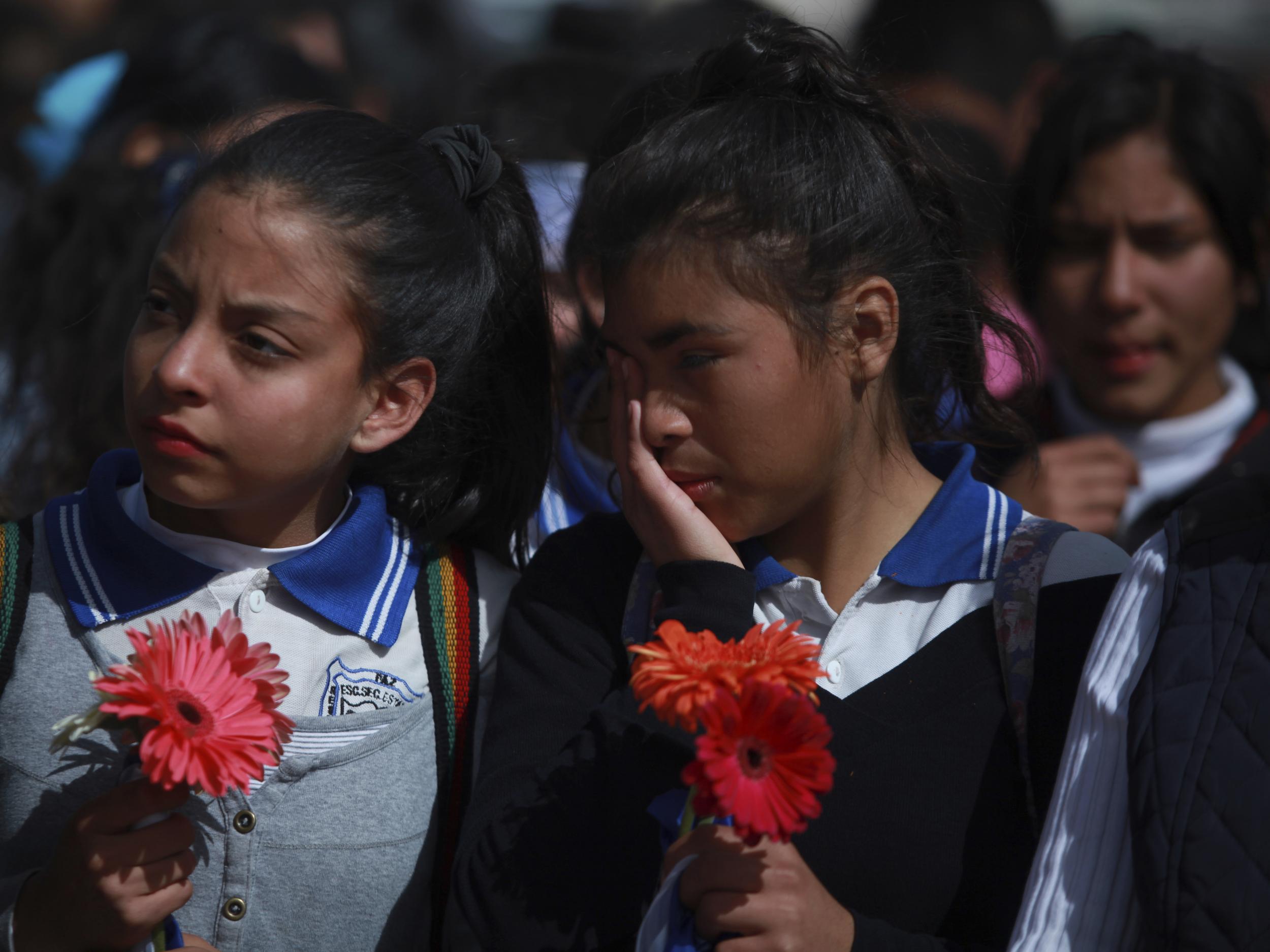Mexico fears Donald Trump administration will begin building deportation camps along border
Sweeping reforms by US Department of Homeland Security would allow suspected illegal migrants to be interned in Cartel-dominated lands while waiting for their case to be heard

Mexicans fear deportee and refugee camps could be popping up along their northern border under the Trump administration’s plan to start deporting to Mexico all Latin Americans and others who entered the US illegally through the country.
Previous US policy called for only Mexican citizens to be sent to Mexico. Migrants known as Other Than Mexicans (OTMs) got flown back to their homelands.
Now, under a sweeping rewrite of enforcement policies announced by the US Department of Homeland Security (DHS), migrants might be dumped over the border into a violence-plagued land where they have no ties, while their asylum claims or deportation proceedings are heard in the United States. US officials didn’t say what Mexico would be expected to do with them.
However, Mexico has said it will not accept the “unilateral” proposals and will not hesitate in approaching the United Nations to defend immigrants, the country's Foreign Minister Luis Videgaray said on Wednesday, ahead of a meeting with US officials
Around the country, Mexicans believe the government isn’t remotely prepared for an influx of migrants should the US somehow push the policy through.
“Not in any way, shape or form,” said the Reverend Patrick Murphy, a priest who runs the Casa del Migrante shelter in the border city of Tijuana, which currently houses about 55 Haitian immigrants. They were part of a wave of thousands who swarmed to the border in the closing months of the Obama administration in hopes of getting asylum in the US.
Tijuana was overwhelmed, and while the government did little, a string of private Christian groups pitched in to open shelters with improvised bedding, tents and sanitary facilities. Donated food kept the Haitians going.
Mexicans quake at the thought of handling not thousands, but hundreds of thousands of foreigners in a border region already struggling with drug gangs and violence.
“Just look at the case of the Haitians in Tijuana, what were they, seven or eight thousand? And the situation was just out of control,” said Alejandro Hope, a Mexico City-based security analyst. “Now imagine a situation 10 or 15 times that size. There aren’t enough resources to maintain them.”
It’s unclear whether the US has the authority to force Mexico to accept third-country nationals. The DHS memo calls for the department to provide an account of US aid to Mexico, a possible signal that Mr Trump plans to use that funding to get Mexico to accept the foreigners.
Victor Clark, director of Tijuana’s Binational Center for Human Rights, said Mexico can simply refuse to accept non-Mexican deportees. “They come through one by one, and when the Mexican immigration agent sees a person who isn’t Mexican, he tells the ICE [immigration and cuctoms’ enforcement] agent, ‘I can’t accept this person, he’s not Mexican,’ and they return him to the United States.”
Mr Hope said the new US policy could create an “explosive situation,” noting that some anti-foreigner sentiment already exists in Mexico’s northern border region and that Central American migrants have been recruited, sometimes by force, into drug gangs like the Zetas and the Gulf cartel.
The US could pay to build the needed facilities. There would be precedents for such a deal. Turkey has agreed to house Syrian refugees headed for the European Union in exchange for at least $3bn in aid.
“For this to be politically acceptable in Mexico, it would have to be paid,” said Mr Hope. “No Mexican administration could accept this kind of thing unless it were accompanied by billions of dollars.”
In a hearing with Mexican senators, the country’s new ambassador to the United States, Geronimo Gutierrez, said, “Obviously, they are a cause for concern for the foreign relations department, for the Mexican government, and for all Mexicans.”
But Mr Gutierrez praised the Trump administration’s release of the policies before this week’s visit to Mexico by US Secretary of State Rex Tillerson, calling that “a position that is much more straightforward and honourable, to make these positions known beforehand... so they can be discussed.”
There are precedents in Mexico for refugee camps.
In the 1980s and 1990s, Mexico took in about 46,000 Guatemalans fleeing civil war. With help from the United Nations, camps were set up in the southern states of Chiapas, Campeche and Quintana Roo. When peace accords were signed in Guatemala in the mid-1990s, almost 43,000 refugees and their children went home, but more than 30,000 Guatemalans and their children born in Mexico decided to stay.
The controversial orders Donald Trump has already issued
Show all 9The same thing could happen with any migrants housed in Mexico.
Haitians streamed into Tijuana last year to seek asylum in the US, but since January they have stopped applying after hearing that other Haitians’ requests were being denied and US authorities were sending them back to Haiti. Murphy estimated the 3,000 Haitians still in Tijuana have mostly decided to seek asylum in Mexico.
He said a lot of Latin American migrants might do the same.
“You know, a lot of Central Americans would rather be deported to Mexico than their own countries,” Murphy said.
AP
Subscribe to Independent Premium to bookmark this article
Want to bookmark your favourite articles and stories to read or reference later? Start your Independent Premium subscription today.

Join our commenting forum
Join thought-provoking conversations, follow other Independent readers and see their replies